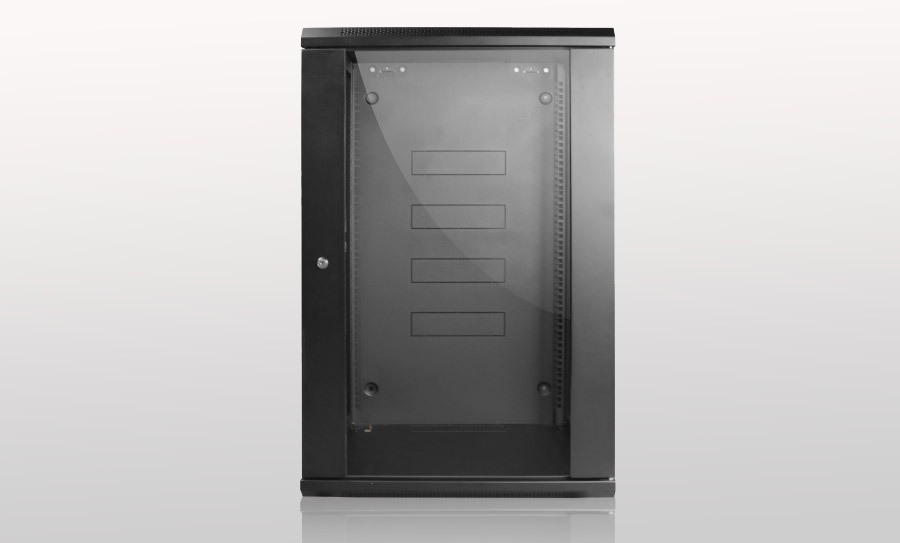With continuous breakthroughs in the computer industry, cabinets have more and more functions. At present, cabinets have become an indispensable product in the computer industry, and various cabinets can be seen in major computer rooms. The cabinet is generally used in the control center, monitoring room, network wiring room, floor wiring room, data room, monitoring center, etc. Below we focus on the basic types and structure of network cabinets.

Network cabinets are generally made of cold-rolled steel plates or alloys, and store computers and related control equipment, which can provide protection for storage equipment, shield electromagnetic interference, and arrange equipment in an orderly manner to facilitate future equipment maintenance.
Common network cabinet colors are white, black, and gray. The cabinet body is divided according to the material, there are aluminum profile cabinet, cold rolled steel cabinet, hot rolled steel cabinet; according to the processing technology, there are 10 fold profile cabinet and 16 fold cabinet.
The stability of the network cabinet depends on the board type, coating material and processing technology. Generally speaking, the early used cabinets mostly used castings or angle steel, which were connected with screws or rivets or welded in the cabinet frame, and then made of thin steel plates (doors). This kind of cabinet was eliminated because of its large size and simple appearance. With the use of transistors and integrated circuits and the miniaturization of various components, the cabinet has evolved from the entire panel structure in the past to a plug-in structure with a certain size series. The assembly and arrangement of the box and the plug-in can be divided into horizontal arrangement and Vertically arranged, the structure of the cabinet is also developing in the direction of miniaturization and building blocks. The cabinet material generally uses thin steel plates, steel profiles of various cross-sectional shapes, aluminum profiles and various engineering plastics.
According to the material, load-bearing and manufacturing process of the parts, the cabinet can be divided into two basic structures: profile and thin plate.
1. Profile structure cabinet: There are two types of cabinets: steel cabinet and aluminum profile cabinet. The aluminum profile cabinet composed of aluminum alloy profiles has certain rigidity and strength, and is suitable for general equipment or light equipment. The cabinet has the advantages of light weight, small handling capacity, beautiful appearance, etc., and has been widely used; steel cabinets are used Special-shaped seamless steel pipes are used as uprights. This kind of cabinet has good rigidity and strength and is suitable for heavy equipment.
2. Thin plate structure cabinet: The side plate of the integral plate type cabinet is formed by bending a whole piece of steel plate, which is suitable for heavy or general equipment. The structure of the bent plate column cabinet is similar to that of the profile cabinet. The column is formed by bending steel plate. Certain rigidity and strength. The structure of the bent-plate column cabinet is similar to that of the profile cabinet. The columns are bent from steel plates. This cabinet has certain rigidity and strength and is suitable for general equipment. However, because the side panels are not removable, it is not easy to assemble and maintain.
The network cabinet is also equipped with necessary cabinet accessories. The accessories mainly include fixed or telescopic guide rails, hinges, steel frames, wire ducts, locking devices, shielding comb springs, etc.








 Home
Home